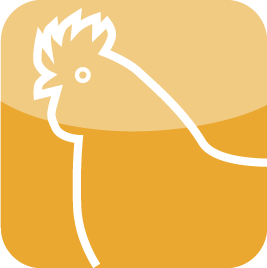Category: Fish
By: Ferit Rad and İsa Şen
One of the biggest players are one of the youngest: Turkey’s sea bass and sea bream sector


Turkish acquaculture by years; according to figures from Turkstat 2018

Sea bass and Sea bream map; graph based on data from Turkstat 2018
The first sea bass (Dicentrarchus labrax) and sea bream (Sparus aurata) hatcheries came up in the middle of the 1980s, shortly after commercial rainbow trout (Oncorhynchus mykiss) farming has marked the success start of Turkish aquaculture in the mid-1970s. An aquacultural friendly policy and diverse initiatives from the business sector led to rapid growth in production and sales volume, beginning in the early 2000s and continuing on today.
Higher market prices for marine farmed species and an upward trend in sea bass and sea bream production gradually increased the importance of marine aquaculture in recent years. According to the Federation of European Aquaculture Producers (FEAP), Turkey is the leading aquaculture nation on the European continent after Norway. In 2017, Turkish farmers produced almost 276 thousand of finfish. With around 160 thousand tons, sea bass and sea bream farms produce more than the half of the total annual volume. Most of the marine farms are located at Muğla and Izmir Provinces in West-Anatolia.
While hatcheries are land-based, the grow-out takes place off-shore in the Aegean and Mediterranean Sea. Cage farms are the most abundant types in marine finfish farming. Polyethylene off-shore cages with diameters between 20 and 50 m are used in marine sea bass and sea bream farming.
Pre-on-growing and on-growing phases in sea brass and sea bream production
Production process of sea bass and sea bream in cage culture is quite straightforward consisting of pre-on-growing and on-growing phases. Production cycle begins with stocking of fry. The common practice is to start with fry of 2-5 g. However; depending on availability of size classes in hatcheries smaller fries (0.8-2 g) can also be used for initial stocking. Commonly cages with a diameter of about 20 m are used in pre on-growing phases. General husbandry practices including feed and grading are main activities until juvenile reach a mean weight of about 20 g. juveniles reaching 20 g are vaccinated and weaned to about 40-60 g. After which are graded and transferred to on-growing cages.
On growing cages are larger and of 30-50 m in diameter. Sea bass and sea bream start to be harvested when reaching 300-350 g which is the most common table-size for sales. Harvesting (i.e. pre on-growing + on-growing) time can vary depending on initial size of the fry, environmental parameters and management practices of the farm. In Muğla province sea bass reach the size of about 350 g in about 15 months, while sea bream grows faster during on-growing season and reach the size of about 300 g in 12 months. Sea bream exhibit a better feed conversation ratio and lower mortalities.
Regulatory framework of fish farming in Turkey
Aquaculture in Turkey falls under the governance of the Ministry of Food, Agriculture and Livestock. Other ministries, such as the Ministries of Environment, Health, Tourism and Transportation are involved in siting, licensing and monitoring. Marine aquaculture enterprises must comply with a number of environmental laws and associated regulations for environmental protection. The licensing procedure for new sites is restrictive and can often take 2-3 years. As a result, it is a common practice for large-scale enterprises to buy existing farms that are already licensed, instead of applying for new potential sites.
In the last decade the use of off-shore technology and large scale off-shore farms have been established. Some enterprises are vertically integrated industrial scale operations, running their own hatchery, feed factory and packaging as well as processing units. Turkish sea bass and bream farms are mainly localized along the Aegean coast. The development of new sites in this area is highly limited, on the one hand by legislation but also because most suitable sites are already in use. Potential sites along the Eastern Mediterranean coast (e.g. Mersin) seem to be new destinations for existing enterprises with expansion plans and new investors.
The long bureaucratic procedures involved in licensing and the restricted space are big challenges for the Turkish aquaculture sector. Profit margins are low and any deficiency in production or increase of costs would therefore severely threaten the sustainability of farms. Subsequently one of the biggest challenges for Turkish producers are, besides fish feed cost, low profit margins and tough market competition with other producing countries.
Acknowledgement:
We like to thank Philippa Schindler for the post-editing of our article.
Go to archive > Did you know





